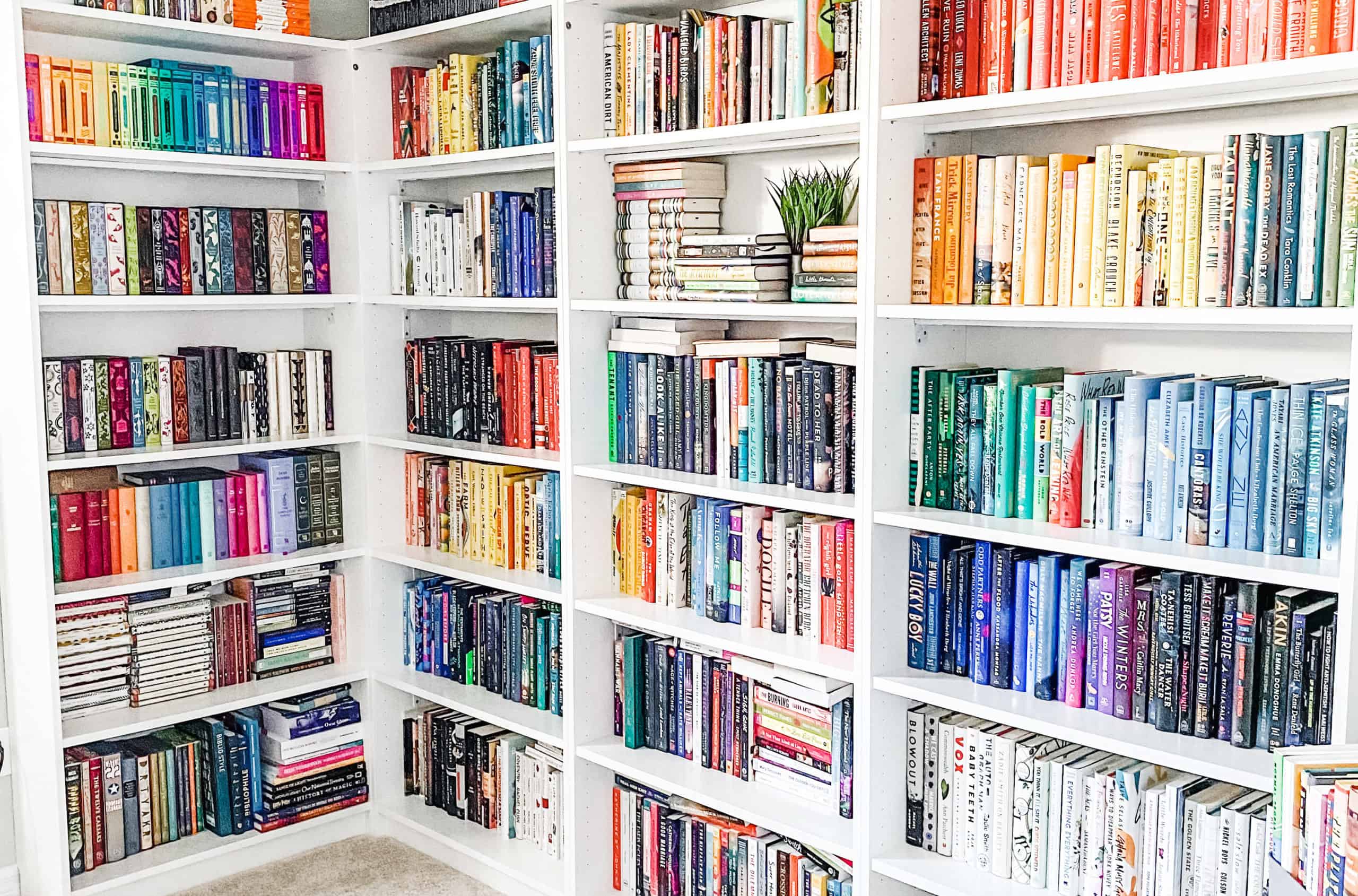Last Updated on April 25, 2024 by BiblioLifestyle

Setting and Achieving Your Reading Goals for Adults
LISTEN ON: APPLE | GOOGLE | SPOTIFY | AMAZON
Today, Victoria shares how to set reading goals and achieve them, plus practical tips so you can take action today. The best part about this episode is that these principles can be used in other areas of your life. So whether you hate making resolutions or already know what you want to achieve, I think you will find this episode useful. Stay tuned.
TOPICS COVERED IN THIS EPISODE:
- Defining resolutions, goals, intentions, and plans.
- What are reading goals and why they are important.
- Examples of easy reading goals.
- Defining your reading goals.
- Making plans to achieve your reading goals.
- Keeping track of what you read.
- Reflecting on your reading life.
- Taking action.

Reading Goals for Adults: How To Set and Achieve Them
The first thing I want us to get clear is the meanings of the different words you will hear, not just in today’s episode but in general, especially when you are talking about making significant life changes.
RESOLUTIONS
What are resolutions?
A resolution is a broad decision. A decision made for a future outcome. A commitment to an outcome.
Example: In 2023, I want to live my best life.
GOALS
What are goals?
Goals are how you clearly define your resolution. Goals are specific and tangible. Goals are the definition of an outcome. Goals are what you’re going to do to achieve your resolution.
So you need to list what you need to do to live your best life in 2023. If reading books is one way you can live your best life, set a reading goal.
Example: My goal is to read a book a month.
INTENTIONS
What are intentions?
Intentions are the true meaning or reason behind your resolution and your goal. An intention is a commitment to the process, not the destination. An intention is your why.
So you need to ask yourself, “why” do you want to read a book a month? The answer is your intention. To get to your true intention, sometimes you need to ask why for each subsequent response at least five times.
Examples of intentions for reading a book a month: I want to reduce my screen time, I want to set an example for my children, I want to start slowing down to help reduce my stress, I want to expand my horizons, I want to join or start a book club so I can make friends.
PLANS
What are plans?
Plans are how you are going to achieve your goal. A plan is the definition of your goal and journey. Plans are your how.
Benjamin Franklin once famously said, “If you fail to plan, you are planning to fail.” Plans not only outline how you will achieve your goals, but a well-crafted and thought-out plan can help you stay on track, navigate through uncertainty, find alternatives, and sometimes remind yourself to be patient But the key is you have to know where you are going.
5 Steps: How To Set Reading Goals and Achieve Them
Step 1: Define your reading goals or resolution.
- If your goal is to start reading again, what do you want to start reading? What kind of books do you want to read? What does incorporating reading into your life look like for you?
- If your goal is numerical, what is your number? Set it, say it, and write it down.
- If your goal is to read more diversely or intentionally, what does that mean for you? What specifically do you want to be intentional about? What diverse stories or authors do you want to focus on? Get very clear on what this looks like for you.
Step 2: Make plans to achieve your reading goals.
- Make plans to achieve your goals by breaking them down into smaller and more manageable tasks.
- Incorporate your reading goals into your other personal goals.
- Quick tips to help you stick to your goals:
- Watch less television and be mindful of your time on social media.
- Schedule reading time if necessary.
- Surround yourself with books and always have a book on hand.
- Join a book club, participate in a reading challenge, tune in to podcasts, subscribe to newsletters and websites that align with your goals.
- Read books that you want to read, not what you think you should be reading.
- Don’t be afraid to stop reading books that aren’t working for you.
Step 3: Keep track of what you read.
To get an accurate picture of your reading life, you need to track your reading. Tracking your reading will help ensure that you are making progress towards your goals and resolutions.
If you’re new to tracking your reading or looking for ways to improve, check out our “5 Ways To Track Your Reading” and “7 Things We Are Tracking In Our Reading Journal” article.
Step 4: Reflect on Your Reading Life.
This means taking a step back from what you’re doing now or at points during your upcoming reading journey. Then evaluate the books and reading methods that have worked and those that have not.
Reflecting on your reading life doesn’t have to be an extensive process, but it will help you see if you’re achieving your reading goals and help you develop better plans to achieve them.
Step 5: Take Action!
None of what we’ve discussed here matters if you don’t take action. So this is where you put all of the steps discussed into play and work towards becoming the reader you want to be and achieving those reading goals.
If you don’t know any readers or are afraid of being overwhelmed, you have a home here with the BiblioLifestyle community and me!
NEXT STEPS:
- Take the What’s Your Reader Type Quiz and discover your reader type and get the resources you need to start reading, maintain the habit, and get intentional.
- Join one or all of our reading challenges!
Do you have reading goals?
What are your reading goals? Do you have goals for this year? How do you plan to achieve your reading goals? Let’s talk all about reading goals and how to achieve them in the comments below.
Looking for more podcast episodes? Tune in here.
MORE READING:
- Before You Set Your Reading Goals Do This
- How To Set and Achieve Your Reading Goals
- 23 Reading Goal Ideas for Adults to Try in 2024
- Mid-Year Reading Goal Check-In
- Creative Ways to Incorporate Your Reading and Personal Goals




+ show Comments
- Hide Comments
add a comment